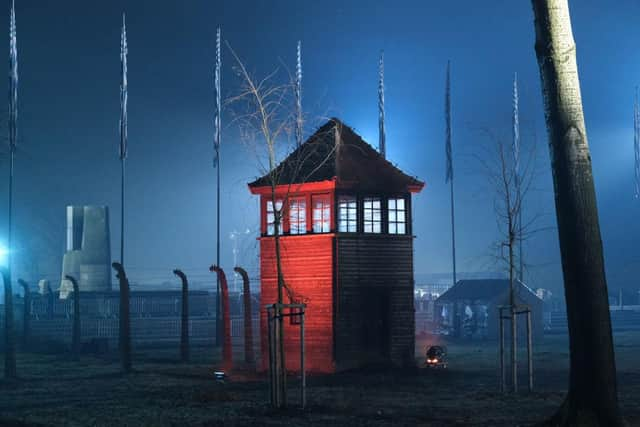Liberation of Auschwitz: where is the Nazi concentration camp - and who liberated it during the Holocaust?
More than 80 years after it was first established, Auschwitz remains a primary symbol of the Holocaust.
The Nazi concentration camp was the setting for the genocide of at least 1.1 million people, mainly Jewish, during the Second World War.
Advertisement
Hide AdAdvertisement
Hide AdParts of the camp have since been preserved and turned into a memorial and museum following the terror experienced there.


The victims and the families of the holocaust are remembered every year on Holocaust Memorial Day, which is marked on 27 January.
Where is Auschwitz?
It was established in May 1940 after the city was annexed to the Third Reich by Nazi Germany in the early days of the Second World War.
The Germans converted an army barracks into a prisoner of war camp for Polish political prisoners, due to mass arrests increasing beyond the existing local prisons.
It is thought that the site was selected by Adolf Hitler’s regime for its location at a railway junction with 44 parallel tracks – used to transport Jews from across Europe to their death.
What happened at Auschwitz?
Auschwitz was three camps in one: a prison camp, a slave labour camp and an extermination camp, with several gas chambers.
It became the largest and most lethal concentration camp in the Nazi's plan for the genocide of Jews during the Second World War.
Advertisement
Hide AdAdvertisement
Hide AdJewish men and women of all ages, including children, were sent to Auschwitz and split into one of the three camps.
Between 1.1-1.5 million people were killed at Auschwitz over five years - the majority of them being Jews, as well as Poles and Roma.
The holocaust resulted in the deaths of six million Jews and 11 million others at the hands of the Nazi Germany regime.
When was Auschwitz liberated?
Auschwitz was gradually abandoned by the Germans as Soviet Union armies advanced in the later part of 1944 and early 1945.
Germany destroyed parts of the camps before leaving in 1945 when Soviet troops got to the site and found the remaining prisoners.
They found 7,650 sick and starving prisoners who had been left behind, little over a week after 60,000 prisoners were sent to concentration camps away from the front.
It has been 76 years since Auschwitz was liberated by the Soviet Union but the camp remains as a museum and memorial.
What is Auschwitz's legacy?
Much of Auschwitz remains intact and is open to visitors from all over the world, though not during the coronavirus pandemic, as a constant reminder of the evil which took place there.
The Auschwitz memorial is available online.
Advertisement
Hide AdAdvertisement
Hide AdGerman chancellor Helmut Kohl, who visited Auschwitz in November 1989, said in a statement on the 50th anniversary of the liberation: "The darkest and most awful chapter in German history was written at Auschwitz."
Originally named the Auschwitz Concentration Camp, the memorial was designated a UNESCO World Heritage site in 1979.
In 2007, it was renamed 'Auschwitz-Birkenau. The Nazi German Concentration and Extermination Camp (1940–1945)'.